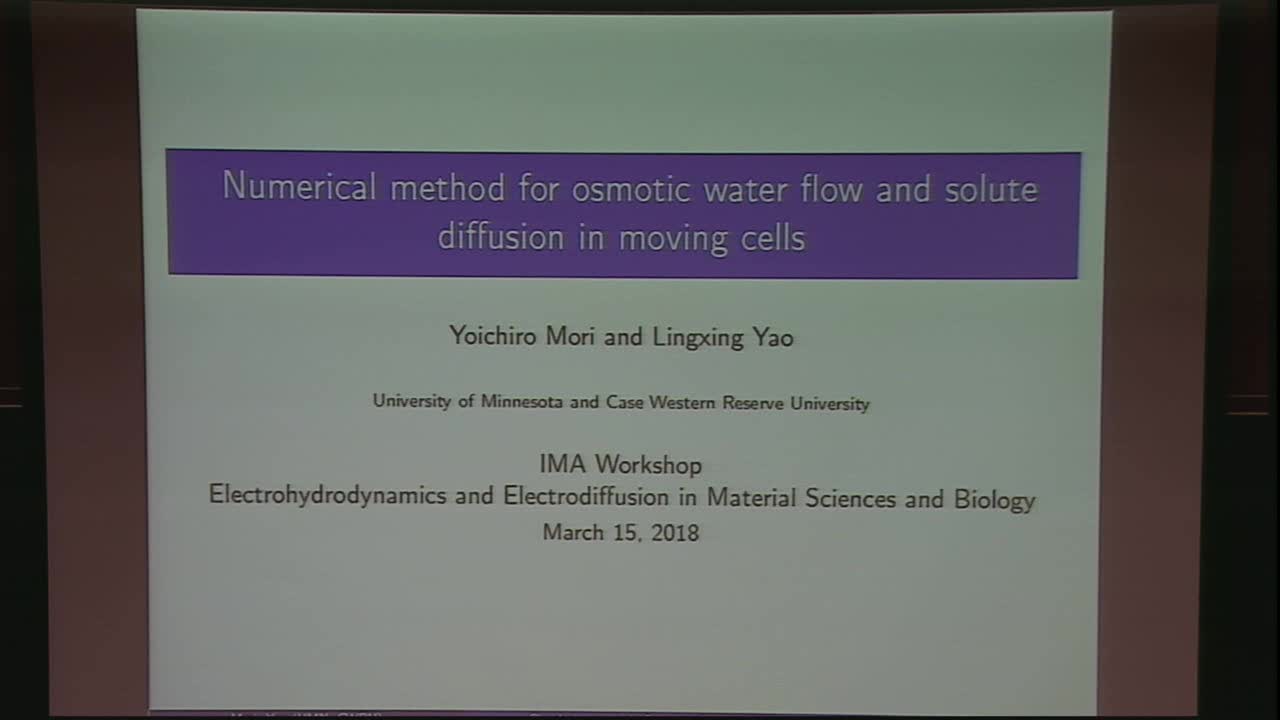Numerical method for osmotic water flow and solute diffusion in moving cells
Presenter
March 15, 2018
Abstract
Differences in solute concentration across a semipermeable membrane of cells generates transmembrane osmotic water flow. The interaction of such flows with membrane and flow mechanics is an important area in many biological applications. Particularly, in recent studies, experimental evidence suggests that membrane ion channels and aquaporins (water channels), and thus, solute diffusion and osmosis, play an important role in cell movement. To clarify the role of osmosis in cell movement, one needs to understand the interplay between solute diffusion, osmosis and mechanical forces. In this presentation, we discuss the numerical method for a mathematical model that allows for studying the interplay between diffusive, osmotic and mechanical effects. In the model, an osmotically active solute obeys an advection-diffusion equation in a region demarcated by a deformable membrane. The interfacial membrane allows transmembrane water flow which is determined by osmotic and mechanical pressure differences across the membrane. The numerical method is based on an immersed boundary method for fluid-structure interaction and a Cartesian grid embedded boundary method for the solute. We demonstrate our numerical algorithm with the test case of an osmotic engine, a recently proposed mechanism for cell propulsion.
